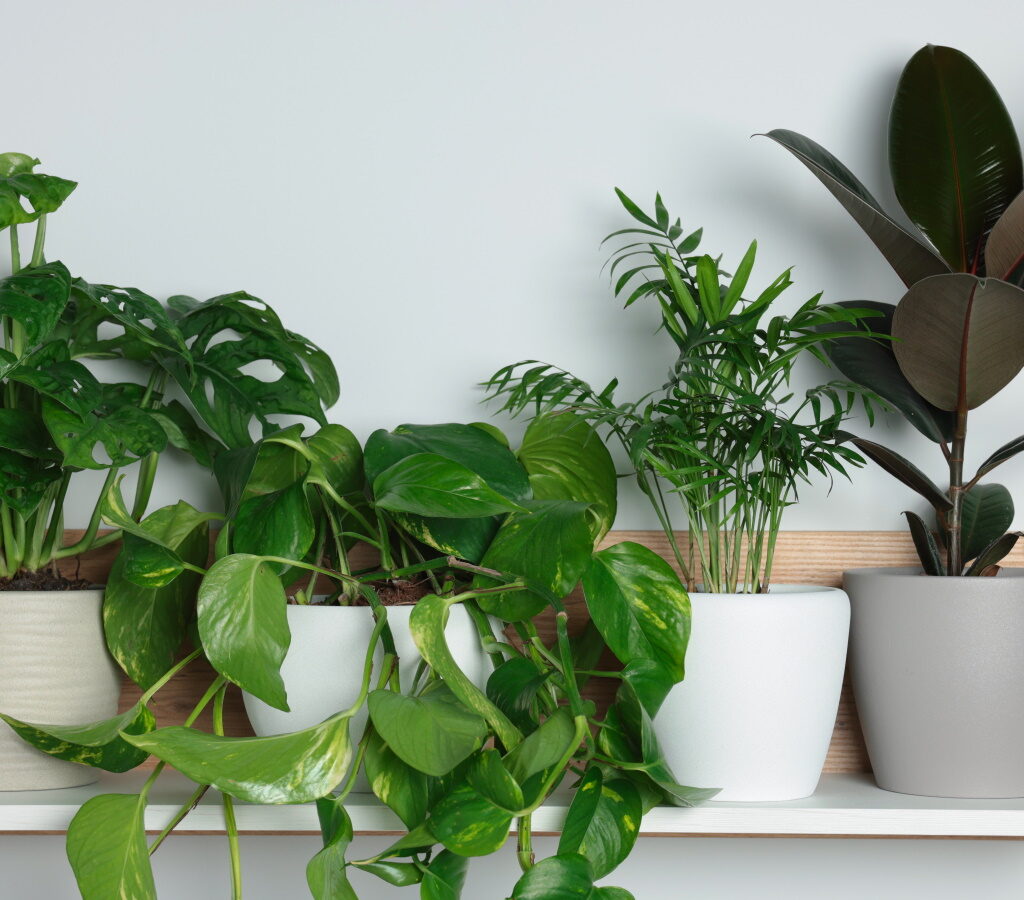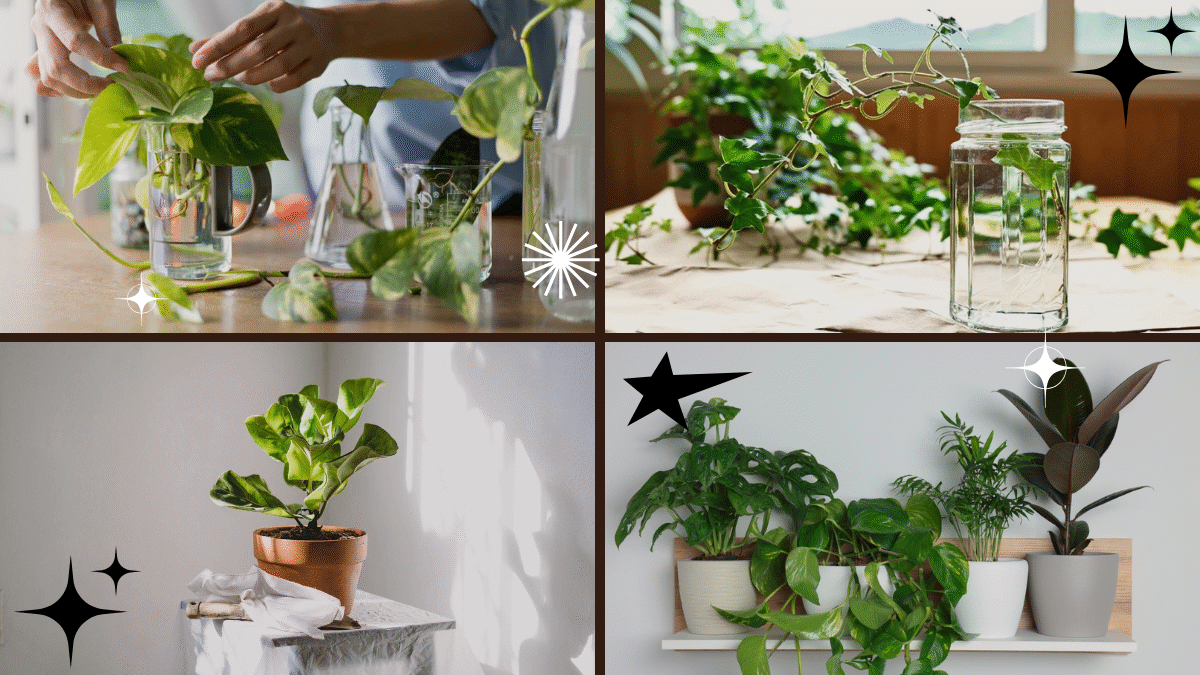Bringing a bit of nature indoors can completely transform your home. Not only do plants purify the air and add a splash of greenery, but they also improve mood and reduce stress. The best part? You don’t have to be an expert gardener or dedicate hours each week to enjoy the beauty and benefits of indoor plants.
If you’re someone who loves the idea of houseplants but worries about the maintenance, you’re in luck. This guide will show you exactly how to grow a plant indoors with minimal effort, covering everything from choosing the right plant to easy care tips anyone can follow.

Why Grow Indoor Plants?
Before we dive into the how-to, let’s look at why adding a bit of green to your home is a great idea:
- Improves air quality by filtering pollutants
- Boosts mental well-being and reduces anxiety
- Enhances decor with natural color and texture
- Requires minimal space — perfect for apartments or small homes
- Creates a calming, biophilic atmosphere
And contrary to popular belief, not all houseplants are fussy. Some thrive on neglect!
Step 1: Choose the Right Plant
The secret to effortless indoor gardening is picking low-maintenance plants that can tolerate a range of conditions. Here are some of the easiest, most beginner-friendly options:
Best Low-Maintenance Indoor Plants:
- Snake Plant (Sansevieria): Tolerates low light and needs watering only every 2-3 weeks.
- Pothos (Devil’s Ivy): Grows in almost any lighting and survives inconsistent watering.
- ZZ Plant (Zamioculcas zamiifolia): Extremely drought-tolerant and thrives in low light.
- Spider Plant: Resilient, fast-growing, and air-purifying.
- Peace Lily: Low light tolerant and alerts you by drooping when it needs water.
- Succulents & Cacti: Require bright light and infrequent watering.
Tip: If you’re unsure about your indoor conditions, Snake Plants and Pothos are nearly indestructible and perfect for first-timers.

Step 2: Pick the Right Spot
Plants have different light and space needs, so placement matters for minimal-effort care.
Light Requirements:
- Bright, indirect light: Near east or north-facing windows (great for Peace Lilies, Spider Plants)
- Low light: Hallways, bathrooms, or offices with little natural light (ZZ Plant, Snake Plant)
- Direct sunlight: Sunny south or west-facing windows (Succulents, Cacti)
Quick Test: Place your hand in the spot where you plan to keep the plant.
- If you see a distinct shadow, it’s bright light.
- A blurry shadow means medium light.
- No shadow means low light.
Avoid placing plants:
- Near heat vents or air conditioners
- In drafty windows
- Next to radiators
Step 3: Choose the Right Pot and Soil
Proper drainage is key to healthy, low-maintenance plants.
Pot Selection:
- Always use pots with drainage holes to prevent water buildup.
- Use a saucer to catch excess water and protect surfaces.
- Decorative pots without holes can work if you place a plastic nursery pot inside them.
Soil Type:
- Use a well-draining potting mix suited for your plant.
- Regular potting soil for leafy plants
- Cactus/succulent mix for desert plants
Avoid using garden soil indoors as it retains too much moisture and may harbor pests.

Step 4: Water Wisely
Overwatering is the number one cause of houseplant failure. Luckily, most beginner-friendly plants prefer drying out between waterings.
General Watering Rules:
- Check soil moisture by sticking your finger 1–2 inches into the soil. If it feels dry, it’s time to water.
- Water thoroughly until it drains from the bottom, then empty the saucer.
- Avoid a strict schedule — let the plant and soil dictate when it needs water.
Plant-Specific Frequency:
- Snake Plant, ZZ Plant: Every 2–3 weeks
- Pothos, Spider Plant: Weekly or when soil feels dry
- Succulents, Cacti: Every 3–4 weeks
Tip: It’s better to underwater than overwater. Most plants bounce back from dryness but rot in soggy soil.
Step 5: Feed Occasionally
Indoor plants grow slower than outdoor ones, so they don’t need frequent fertilizing.
Easy Feeding Tips:
- Use a balanced, water-soluble houseplant fertilizer
- Apply during the growing season (spring and summer) every 4–6 weeks
- Skip fertilizing in fall and winter when most plants go dormant
Succulents and cacti need even less — typically once or twice in spring and summer.

Step 6: Keep an Eye on Pests
Indoor plants are less prone to pests, but occasional issues like spider mites, fungus gnats, or aphids can appear.
Preventative Care:
- Wipe leaves with a damp cloth once a month to remove dust and pests
- Inspect new plants before bringing them indoors
- Isolate infested plants until resolved
Natural Remedies:
- Spray soapy water for aphids or mites
- Use neem oil for stubborn infestations
Step 7: Prune and Repot Occasionally
While low-maintenance plants don’t demand much, a little occasional care keeps them looking great.
Pruning:
- Trim yellow or dead leaves as needed
- Pinch back leggy growth to encourage bushiness (Pothos, Spider Plants)
Repotting:
- Every 2–3 years or when roots outgrow the pot
- Move to a slightly larger container with fresh soil
Effortless Plant Care Hacks
Here are a few extra tricks to make indoor plant care even easier:
- Self-watering planters: Great for forgetful gardeners
- Group plants together: Increases humidity naturally
- Use ice cubes for watering: Prevents overwatering for small pots
- Place plants in the bathroom: Perfect for humidity-loving species
Common Mistakes to Avoid
| Mistake | Why it’s a problem | How to fix it |
|---|---|---|
| Overwatering | Causes root rot | Check soil before watering |
| Ignoring light needs | Leads to leggy, weak growth | Choose plants suited to your light |
| Using poor drainage pots | Traps excess water | Use pots with drainage holes |
| Forgetting pest checks | Pests multiply quickly indoors | Inspect leaves regularly |
| Too much fertilizer | Burns roots and damages foliage | Feed sparingly and only in growing season |
Final Thoughts
You don’t need a green thumb, a sun-soaked greenhouse, or hours of spare time to enjoy the benefits of indoor plants. By choosing the right varieties and following these simple care steps, you can successfully grow a plant indoors with minimal effort.
Start with one hardy, forgiving plant like a Snake Plant or Pothos, and you might just find yourself hooked on the soothing, satisfying hobby of indoor gardening.
So, why wait? Pick up a beautiful houseplant on your next trip to the market and turn your living space into a fresh, calming, green retreat.





Leave A Comment